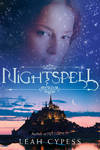written by Frank Dutkiewicz
Are you still an avid reader of Daily SF? You should be. Read on and see whyâ€
“What Jerry Knows” by Shane D. Rhinewald (debut 4/2 and reviewed by Frank D) is the tale of a savant. Jerry prattles off numbers, important events in history, and formulas. Jerry is lost in his mind, but the protagonist knows how lost all of man would be without Jerry’s obsession with numbers.
“What Jerry Knows” is more of a reminiscence, than a tale. The story is brief, and I don’t want to reveal too much, but the tale is about the protagonist’s need to show his gratitude. Not a bad tale. Very nice.
“This Rough Magic” by Christie Yant (debut 4/3 and reviewed by Dustin Adams) is somewhat abstract, drawing little on a plot arc, but is nevertheless quite a delightful read. I classify this as a romance story, and while that might not be for everyone, perhaps not even me, I enjoyed each word of this flash fiction length tale.
The writing is solid and flawless. The setting, while simple, is given complexity by the uncertain nature of the story’s narrator. She has great power, yes, but it’s mollified by a man whose life she saves, leading to a great dichotomy of character.
While this strikes me as more of a scene than a story, I’m inclined to *recommend* it based on the writing skill alone, but it also happens to be a great scene.
Recommended.
Sora saves the Emperor’s life with the magic of his flute in “After” by C. L. Holland (debut 4/4 and reviewed by James Hanzelka). He is rewarded with gold and the removal of his hands. Once healed, he is escorted outside the palace to be robbed. Found by others who have suffered a similar fate his damaged soul is healed by their presence, allowing him to repay the Emperor in time.
This was an interesting piece, well developed and well written. The story of revenge served by those most harmed is a satisfying, if familiar tale. The twist provided in this one will hold your interest.
Ava is enduring a visit from her father in “Back In My Day” by Stacy Danielle Lepper (debut 4/5 and reviewed by James Hanzelka) . Tired about hearing how everything was better, “Back in My Day”. He blithely ignores each of her counter arguments, continuing the argument until she demonstrates the upside of progress.
I’m conflicted on this story. There are some odd constructs that I found confusing. For example, in the opening when she flicks a switch and the baby opens his eyes; it lead me to believe he was an android. This ambiguity is disconcerting and it took several reads to sort out the intent. In spite of this I generally liked the story, particularly the ending. Something I wish was possible today.
In “Nameless” by Mari Ness (debut 4/5 and reviewed by James Hanzelka), the protagonist’s name has been stolen. The singer tries to sing her a name, her aunts and uncles try to find her name and she can’t remember her name. The singer takes her on a trek to find her name, but as she discovers it can be a long journey for someone who is nameless.
This is a long meandering story of discovery, with little discovered. It does a good job of creating a world, but not much else. If you are drawn to esoteric studies in world building this is your story, if not, I would advise not investing the time.
A time traveler sets to compound a wrong into a right in “Older, Wiser, Time Traveler” by M. Bennardo (debut 4/9 and reviewed by Frank D). The protagonist in this tale talks of a hypothetical circumstance with himself on the merits of time traveling to undo a crime of passion. The man discusses steps needed to carry out his plan while he steels himself with what must be done.
The narration of “Older” has the appearance of an interview. It took me some time to place who and what the characters in this tale, and their roles, were. Intriguing tale told by a strong writer. I enjoyed the end result.
Hero devolves into a relic in “Rust” by Steven Saus (debut 4/10 and reviewed by Frank D). Max Ribaldo had been one of many soldiers cut down in battle. But good soldiers never die when advanced technology can find another use for them. Max serves many years as a cyborg fighting machine. Now he is the last one. His remaining time is as an artifact and guide for a museum. Max thinks back to his time as a soldier, and contemplates how much of his humanity remains.
“Rust” is less about a battle droid and more about the line in which machine erases the man within. Max has always believed, or perhaps has an overriding program, that convinces him that he is still human. The story bounces from a museum tour group to flashbacks of Max’s career.
Max is a cold and clinical being. His answers to questions are factual, even when the questions are meant to elicit an emotion response. The reader is left with the impression the man within has been erased, but the question remains on whether it is the hardware that has made Max that way or the horrors of war.
Rust is a thought provoking work of science fiction.
A man must have a mysterious box in “A Case of Curiosities” by Guy Anthony De Marco (debut 4/11 and reviewed by Frank D). The protagonist is intrigued with a box in a novelty store. The box is full of curiosities, alluring items that can’t be removed.
The story is full of twists. The tinkerer who sold him the box proves to have ulterior motives. The changing story made it difficult for me to buy the premise.
Elle receives two presents for her birthday in “A Hole in Time” by Amy Gaertner (debut 4/12 and reviewed by Frank D). A gift that is purchased with sentiment, and another that erases the sentiment away. Elle is a research scientist. Her colleague, Luisa, presents her with her latest invention, a hole in time. She is willing to share credit with Elle but Elle fails to see the value of Luisa’s findings.
The protagonist in “The Hole” is suffering from an early version of a mid-life crisis. She comes off as irritated from the start, so when Luisa has two unexpected gifts for her, Elle is cold, contrite and unappreciative. The ‘hole’ Luisa discovers is an imperfection in time and space but its effects are psychological.
I confess, I wasn’t taken in with this story. An unlikeable protagonist coupled with a premise that didn’t go anywhere made for a tale where I didn’t really care about. Like Elle, I couldn’t see the significance of Luisa’s hole, although I doubt I would have dismissed it as she did. Most of the story was a subplot of Elle’s dour disposition. Sure, her career hasn’t turned out the way she would have liked but that only made her like everyone else.
“A Hole in Time” is a good metaphor for my experience reading it.
“A Slice of 3.141592653589793238462643” by Oliver Buckram (debut 4/13 and reviewed by Dustin Adams).
How can you argue with a story that’s 314 words long and about À? Three characters with historically significant names eat Pie, drink coffee, and debate the strange patterns surrounding this enigmatic number.
314 words. Really? Yes. Fun story. Worth reading.
The protagonist is dumped by her boyfriend in “Objects in Space” by Alex Livingston (debut 4/16 and reviewed by Frank D). David’s ‘Dear John’ letter only states that he ‘needs space’. The protagonist had to sacrifice something dear to her just for the right to read it. She hunts down David to find out what he meant.
This story is set in a future where there is a limit for the amount of things you can have. Not conducive to a pack rat, to say the least. “Objects” is semantically clever. I liked the to-the-point ending of this piece.
Reality TV catches Mars’ first astronauts by surprise in “Infested” by Stephen V. Ramey (debut 4/17 and reviewed by Frank D). A crewmember finds the first micro-camera in a bathroom. Soon, the news leaks to the rest of the crew and a search to find all the cameras tears the ship apart.
“Infested” is a story of how people react when they discover their privacy has been sacrificed for a voyeuristic public. I found this tale to be quite clever and accurate. If I were I a part of this crew, I may have done the same thing they had, even if he consequences proved to be far worse than the violation of my privacy.
Recommended.
“A Special Day” by Shannon Fay (debut 4/18 and reviewed by Frank D). A ski bunny takes a sudden interest in the protagonist and buys him a coffee. The ensuing conversation drifts to an unlikely subject.
The subject matter in “A Special Day” is about the day no one celebrates, the pre-anniversary date of their death. It is a day only the snow bunny can appreciate. The tale has a twist that comes out of nowhere yet isn’t surprising when it is revealed. I found the story to be sound but was one where the protagonist became a third wheel in the tale. Interesting.
Artor the Sorcerer aims to seize the great books of sorcery held in a vault in “Undone” by Greg Porter (debut 4/19 and reviewed by Frank D). But a pest has foiled his ambitions.
This very brief tale introduces a pun-ly named creature that completes the crafty twist of this tale.
Something menacing lurks in the deep in “Mad Cats and Englishmen” by Laura Anne Gilman (debut 4/20 and reviewed by Frank D). The pirate ships’, Fifth of Moon, mascot can feel its presence. As a cat, Oliver knows when he is being watched. The ships extrinsic Captain has been oddly distant and on edge. Herself, the Quartermaster, is aware of his strange behavior as well. The Fifth of Moon is a hunted vessel, hunted by something evil below the waves.
Taking “Mad Cats” all in is an adventure all by itself. It is a serious tale set in the high seas of the 17th century with a mythological monster, and a cast of characters worthy of a Disney cartoon. The story centers around a mismatched trio: a talking cat, a woman who serves as second-in-command, and a brighter than the average parrot. The first half of the tale serves as a gradual buildup of tension. Danger lurks unseen. The crew can feel it. Danger reveals itself in the form of a sea serpent. The beast is after the Fifth of Moon, and the Captain is up to the challenge of facing down a worthy opponent.
“Mad Cats” is long tale for Daily SF, and I don’t just mean its actual length. The story is told unnaturally long for the publication’s usual choice of sharp and to-the-point fiction. Despite the unusual characters used to tell this tale, the plot to “Mad Cats” reads like a cliff note version of Moby Dick, but with a monster motivated by the thrill of the chase instead of vengeance.
On the surface, using Oliver as the stories protagonist seems odd and unnecessary, but as I was reading the tales climatic scene, I concluded that using a talking cat as the narrator was a stroke of brilliance. Fifth of Moon became the monster’s play thing. Only a cat could identify with the chasing of prey for sport. Oliver’s inner psyche knew they were in trouble before any signs of danger became apparent to the rest of the crew, which helped to set the tone of this piece.
If you have little patience for a slowly developing plot, you may want to avoid this tale. But if you like the idea of meshing Narnia-like characters into a literary classic storyline, by all means give “Mad Cats” a look.
Two sisters stop at an intersection and are confronted with the image of a Mutie in need of help in “Ella and The Man” by K.S. Clay (debut 4/23 and reviewed by Frank D). Muties are the diseased of a future tomorrow. Inflicted with a sickness that leave them speechless, and other aliments not clearly defined, they are the pariah of society. The Mutie looks familiar to Ella. She wants to help the man but her sister, Carmen, is dead set against it. A passing motorcyclist changes things when he throws a Molotov cocktail on the Mutie. Ella springs into action, forcing her sister to react.
The Muties’ in “Ella” are modern day lepers. The disease has become so widespread the hospitals no longer treat it. Things have degenerated to the point where compassion has gone out the window.
I found this tale choppy. The dialog came out in half spoken sentences, the author’s way of showing her protagonist’s distraction. It made much of tale confusing, which is too bad because I rather liked the sudden change of events when the cyclist appeared and the twist at the end. Not too bad of a story.
A man has a hard time getting over a break up in “You’ve Ruined This For Me” by Ewan C. Forbes (debut 4/24 and reviewed by Frank D). The protagonist is depressed. He won’t leave his house, answer the phone, go to work†Nothing outside, even Armageddon, can get him to care enough to rejoin the real world.
This is the tale of one self-absorbed man. All the noises, news reports, and warnings from his friends can get him to see if the world has gone on without him. As odd of a premise as that sounds, I am betting everyone has been in the same place this clod finds himself in this story. Kudos to the author for creating such a convincingly heartbroken man.
“Dolly at the End of the World” by Amanda C. Davis (debut 4/25 and reviewed by Anonymous) is a brief, post-apocalyptic story about a young woman/girl called Dolly, who looks after a red box. Most of the dialogue in the first part of the story is Dolly conversing with herself, and responding as though it is her Pappy speaking, and not her–a split personality kind of thing. It’s quite a nice touch and gives a sense to the odd circumstances she grew up in. One thing Pappy told her was to never open the red box–okay, pappy…
But then Malcolm turns up and he seems to have little respect for Pappy’s edicts…
It’s quite a nice little story, but since it was written from the point of view of a naive young person who has grown up alone and has very little experience, it felt a little one dimensional at times, but the nice writing helped.
A brother would do almost anything for a sister who has always been there for him in “You Can’t Come Here Anymore” by Luc Reid (debut 4/26 and reviewed by Frank D). Almost.
This very short tale had an ending I still haven’t fully grasped.
Pritchard chooses to get in touch with his emotional side in “The Bittersweet Here and After” by Maggie Clark (debut 4/27 and reviewed by Frank D). Pritchard’s wife Myna is dying. Frail, hacking up blood, her end is near. Pritchard wants to be able to experience the grief of losing a loved one so chooses to disable his emotional governing nano-protocols. Absorbing the full brunt of bitter emotions grants him the ability to see people for who they are, while making him appear dangerous to those around him.
“The Bittersweet” is set in a world where emotional outbursts are kept in check by technology. “Ease” tapers the bitter feelings that mankind suffers through. Those who have embraced the technology have excelled in society while the ones who haven’t are falling behind. The benefits aren’t always so grand, however. A story of a dancer who kept dancing on broken feet moves Pritchard to forgo Ease while his wife is ill. He senses he has lost something, and wishes to not miss what will be important during his most trying of times.
I had to read this tale twice to be able to grasp its meaning. The author chose to tell this original concept from the perspective of a man experiencing the feelings of men in years gone by. Nano-protocols in this tale are shown in a soft 1984-esque light. Society has benefited from the technology. Crimes of passion have fallen, children are easier to deal with, and wars are things of the past. Governments, production, businesses , all run smoother. All the people in Pritchard’s life tell him he is making a mistake and that his choice is a selfish one.
Pritchard sees the world through the eyes of a bitter man struck with grief and guilt. Ease has taken away the filters many of us have installed to spare our fellow man from the hurtful thoughts we have stored safely within. His friends and co-workers are rude. The observations they make are callous and uncalled for. Still others wonder what real feelings are like, questioning whether the people that are close to them have suppressed the real them within because technology has deemed it better for society.
“The Bittersweet” is a thick tale. It is told through subtle body language and with the gurgling feelings of a man who hasn’t truly grasped his own feelings in a very long time. There is an underlining subplot in that the story explores the age old question of what is best for society; the greater good of man versus what it is to be a man. I am glad I read it a second time or I wouldn’t have been able to appreciate the effort Ms Clark put into it. The story is difficult to grasp with the way she told it, but a story like this could be told in only the way she chose. For those of you who wonder where man is heading attached with the little bits of technology that have become so ingrained into our culture, this story is a can’t miss. It may prove to have been prophetic, one day.
“Diatra” by Kevin Pickett (debut 4/30 and reviewed by Anonymous) is a short story about the decommissioning of a living space craft and it glances at the relationship that has developed between the craft and its captain.
This is a very brief story that didn’t really grab me as it feels like not much happens. The ship is manoeuvred into position and is driven toward a star. There is some dialogue between the ship and the captain and there are some emotional buttons pressed, but only in passing.
I am aware from the bio that this is the author’s first published piece and, with that in mind, there are a lot of positives to take away (smooth writing, nice pacing) but I think the story would have benefited from a little more happening, perhaps a final twist or something.
?????
I have nothing to add here. I would have liked to have announced a Daily SF story as a finalist in the Million Writer’s Award (didn’t happen), or cheered that Locus and/or Tangent Online has decided to change their policy and include Daily SF in their circle of publications worthy of covering (fat chance). I can tell you about the wonderful Kindle editions of past months of Daily SF, they are worth checking out.
There is one opinion I’d like to share. I would like give my first recommendation for the art of this month. I think all of the monthly covers DSF have used have been first class, but this month’s DSF rocket with a wonderful fiery moon and outstanding star filled sky was extra special. Jonathan Westbrook deserves recognition for the splendid work of art.
 Have you’ve seen this person? He is wanted for crimes against the written word and for assault and battery on the English language. Despite being rejected over 800 times he still mercilessly stalks and harasses editors of speculative fiction, and may be responsible for several of them closing down because of his failure to take a hint. If you have seen him or know of his whereabouts, contact Diabolical Plots immediately. Seize any material he is in possession of (laptop, pad and paper, quill and parchment) to stop his crime spree, by any means necessary.
Have you’ve seen this person? He is wanted for crimes against the written word and for assault and battery on the English language. Despite being rejected over 800 times he still mercilessly stalks and harasses editors of speculative fiction, and may be responsible for several of them closing down because of his failure to take a hint. If you have seen him or know of his whereabouts, contact Diabolical Plots immediately. Seize any material he is in possession of (laptop, pad and paper, quill and parchment) to stop his crime spree, by any means necessary.

 The book Fifty Shades of Grey by E.L. James has been mentioned in many many different media sources over the last year, to a much larger degree than most books get attention. Now, this happens periodically with books that gain some mainstream appeal, like Dan Brown’s Da Vinci Code and, Stephenie Meyer’s Twilight series, and JK Rowling’s Harry Potter series. I didn’t really know what kind of book this particular one was until I saw a Saturday Night Live fake Mother’s Day commercial, wherein various families come home to give their mom breakfast in bed or other traditional gifts, and find her in bed, in the bathtub, or in the laundry room masturbating, causing much embarrassment on everyone’s part. Ah, erotica.
The book Fifty Shades of Grey by E.L. James has been mentioned in many many different media sources over the last year, to a much larger degree than most books get attention. Now, this happens periodically with books that gain some mainstream appeal, like Dan Brown’s Da Vinci Code and, Stephenie Meyer’s Twilight series, and JK Rowling’s Harry Potter series. I didn’t really know what kind of book this particular one was until I saw a Saturday Night Live fake Mother’s Day commercial, wherein various families come home to give their mom breakfast in bed or other traditional gifts, and find her in bed, in the bathtub, or in the laundry room masturbating, causing much embarrassment on everyone’s part. Ah, erotica.



